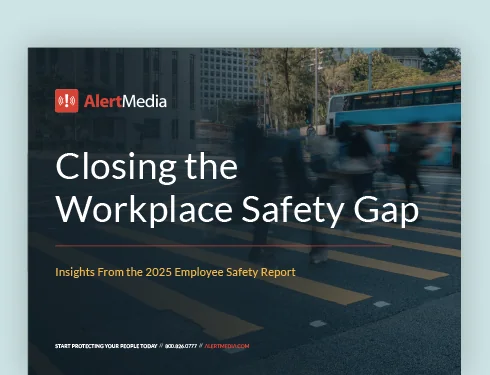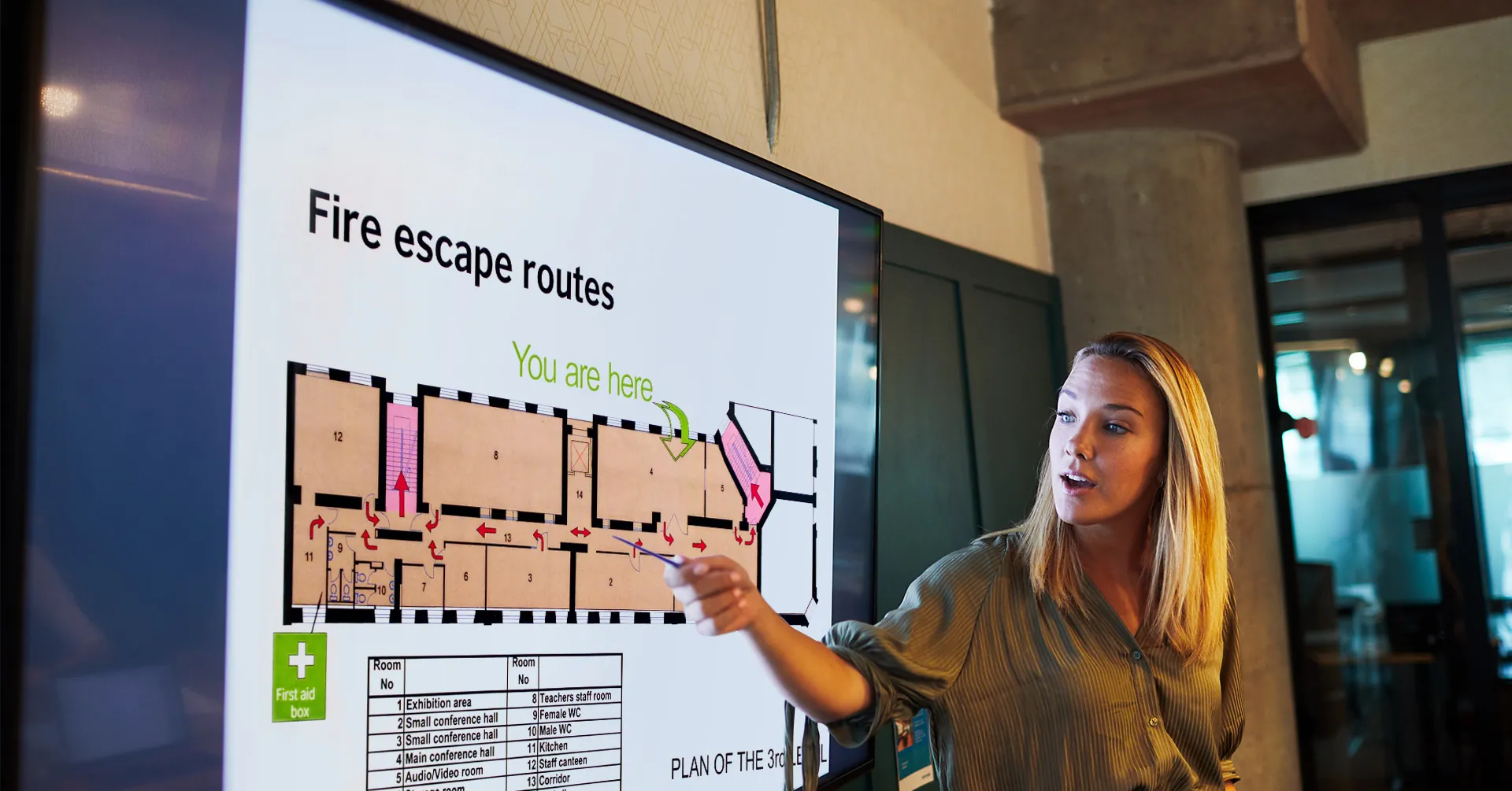
Keeping a Mobile Workforce Safe: Q&A with Penny Neferis, JetBlue
In this Q&A, JetBlue’s head of business continuity and emergency response shares lessons learned and advice concerning how to keep dispersed teams safe during critical events.

While the world continues to wrestle with the ongoing health crisis, many companies have begun planning for an eventual return to the office. However, for industries dependent on essential workers and distributed employees in the field, the conversation about how to best keep employees safe has been a constant since the pandemic began.
In a recent episode of The Employee Safety Podcast, Peter Steinfeld was joined by Penny Neferis, Director of Business Continuity and Disaster Response at JetBlue Airways. Penny joined JetBlue in July 1999, playing a pivotal role on the JetBlue startup team as employee number three of JetBlue’s global team of 20,000 employees. Earlier in her career, she founded the company’s care and emergency response department—developing and implementing emergency response plans, training, procedures, and JetBlue’s command centers. Today, Penny leads a team of business continuity and safety professionals to ensure JetBlue is prepared for any potential business interruptions and is responsible for leading the company’s crisis response to 9/11, major earthquakes, hurricanes, and most recently, COVID-19.
During the discussion, Penny offered best practices for keeping a mobile workforce safe, highlighted ways that organizations can improve crisis response plans, and shared why she believes companies should collaborate with other like-minded organizations during emergency events. You can listen to the full conversation below.
Q&A With Penny Neferis, Director of Business Continuity, Disaster Recovery & Emergency Response for JetBlue Airways
Penny, can you tell us about your background and your role at JetBlue?
I studied aviation and specialized in aircraft accidents. I’ve always had a passion for aviation and crisis response. One of my first internships was with the National Transportation Safety Board (NTSB), and they sent me out to investigate a blimp accident—I’ve been hooked ever since! I was lucky to join JetBlue in 1999—prior to the company’s launch. I was part of the founding team to build the carrier. From getting certified to the delivery of our first aircraft, it was incredibly exciting.
In my current role at JetBlue, I lead three different teams: Emergency Response, Business Continuity & Disaster Recovery, and System Operation Safety.
- Our Emergency Response team does all of our aircraft accident planning, making sure that each of our destinations is ready in the event we have an emergency or other major incident involving an aircraft.
- Our Business Continuity team is responsible for all other types of disasters, including planning for the pandemic, weather events, active shooter scenarios, data center planning and testing, and more.
- Finally, our System Operation Safety Team ensures our operations center complies with regulations, follows up on any concerns our crew members might have, and verifies that we’re following our company policies.
All of our teams are responsible for drafting crisis plans, conducting training, and leading activation plans.
JetBlue serves millions of customers every year across nearly 100 locations. As a result, your team has to plan for a wide range of threats from active shooters to severe weather and now COVID-19. How do you prioritize the various threats your organization may face on any given day? How do you assess your level of preparedness for each threat?
We look at what’s going on in the news and monitor what’s happening around us. For example, the 737 MAX fleet grounding wouldn’t have been a top concern before a few years ago, but because of what was happening in our industry, we made sure our fleet grounding plan was updated and refreshed.
We also conduct an annual hazard risk survey, sent to directors and our crisis management team. In that survey, we list 40 different crisis events relevant to the company and have everyone score each crisis based on its impact on employee safety, the business, or our facilities. Each person records how ready they think our organization is to face each crisis. Once we get those results, we rank priority based on their feedback. These results help guide what type of tabletop exercises we run, what training we provide to employees, and ensures that our plans stay updated for those top concerns.
How do you keep your large, mobile workforce feeling safe, informed, and connected during crises and also on a daily basis?
Our notification system has helped us reach out to our workforce during crises. For example, with the recent protests and demonstrations in D.C., we were able to send an alert, check-in on everyone immediately, and find out if they needed assistance. We also get leadership engaged and make them aware if they have team members living in an area that could be impacted. That helps us streamline getting to the folks that might need assistance. Our team loves it. A lot of times, we will get texts back saying, “Thanks for checking on us! You guys are great!”
How do you ensure employees remain well-versed in crisis response even though they might not need to use a plan for months or even years?
We conduct quarterly tabletops with surprise scenarios for our crisis management team. We also perform company-wide exercises. For example, one year, we focused on earthquake preparedness and held a nationwide contest where JetBlue employees had to take pictures of their leaders taking cover under their desks, as they would be in the event of an earthquake. We are constantly promoting preparedness and finding ways to engage our teams. Crisis preparedness is part of our DNA. You can’t let your emergency plans sit and collect dust. Having an active program is essential to keeping employees safe.
“"You can't let your emergency plans sit and collect dust. Having an active program is essential to keeping employees safe."”Penny Neferis Director of Business Continuity & Emergency Response, JetBlue Airways
What are some best practices you have for engaging your workforce and pushing out a culture of preparedness across the organization?
We have several programs that our crew members can engage in to be more active with crisis response. We have a Red Cross program with more than 300 of our JetBlue crewmembers trained as Red Cross volunteers. When deployed, they are paid and can be sent out for two-to-three-week deployments to work in a shelter anywhere across America. When they return, they bring that skill set back to us.
We also have our Care Team Program, which we originally created for emergency plane crash response, but we also use it for hurricanes and other crises. We have more than 1,500 Care Team members that have completed a course designed to teach everything they need to know about emergency response, how to communicate, and what they can do to help someone in crisis. We spotlight these employees and share their stories with our organization. As a result, we have a waitlist of people wanting to get into our programs. It’s been very positive, and I’m so proud to be a part of these programs. We couldn’t do what we do without them.
What tools and resources should every organization have at their disposal to get ahead of crises and create a robust infrastructure that allows them to respond effectively?
The first thing every organization needs is resources—you need people. You need someone who will be dedicated and passionate about crisis response because it will translate to the program. The next thing every company needs is tools. You have to have a notification system. You can’t be trying to text and call everyone. An emergency notification system makes engagement and response easier. We also have secure satellite phones for our island destinations because when phone systems go out after a storm, we still need the ability to communicate with them.
Although anyone can write great crisis plans, there will inevitably be a crisis that there is no plan for, like 9/11. No one thought that far. The key is having an infrastructure ready to go, having people dedicated to working on crisis organization, testing and activating your plans, and being able to communicate effectively with your entire company.
Has leading responses to national crises like 9/11 or significant weather events shaped your approach to emergency management?
We were less than two years old as a company when 9/11 happened. We were in New York—we were in an industry that was being attacked, in a city under attack, and we all witnessed the second plane hitting from our headquarters. Early on, that set the tone and showed us the level of engagement we would need in a crisis.
We went to the airport and helped stranded customers. We weren’t going to shy away, hide, or pretend nothing was happening. We were going to engage actively. When a crisis occurs, we look at it from three different lenses:
- What impact does this have on our employees?
- What impact does it have on our customers?
- What impact does it have on the community?
When I think about recent events—specifically the 2017 hurricanes in Puerto Rico—we had close to 500 of our crew members residing on the island. [The storms] had a huge impact on the community and our staff. We had to make sure that we were there to help. Our small but mighty disaster response team could only work so long, and we had to learn to count on other groups to step in and help. Our teams are robust, but we felt ownership to take all emergency responses on our shoulders in the past. Since the hurricanes, we’ve learned how beneficial it can be to have other teams step in and help. We’ve applied those lessons again with COVID-19.
How does JetBlue’s culture play in helping you plan for emergencies?
I think it goes back to our values: safety, integrity, caring, passion, and fun. If you walk into a JetBlue building, training center, or terminal, you’ll see our values featured all over the place. When I think about safety and integrity, that’s so important when it comes to emergency response. You can’t say you’re a caring company and not care for your people. So it’s part of our DNA, and our senior leadership makes it a priority. They participate in all of our exercises, and our CEO and president often perform mock press statements during our exercises to show their engagement. It really stems from how we built the company with our values 21 years ago, but having that senior leadership engagement helps a lot.
We previously spoke to Bob Arnold, President of Disaster Recovery Journal, about the importance of community in business continuity. How do you stay on top of current trends and reach beyond your organization to learn from what others are doing in order to develop stronger crisis plans?
Developing strong relationships early on will really help you, whether that’s engaging local, state, or federal agencies—FEMA, the NTSB, the FAA—or getting together with others in your industry and sharing best practices. We used to be able to go to conferences, meet folks, and learn from each other. [While that’s not possible right now,] we can still rely on relationships that were developed in the past and ask other industry leaders how they’re addressing challenges. There’s no competition when it comes to a crisis; we’re all in it together.
What’s something people can take action on today to help them improve their company’s safety culture?
Business continuity or crisis planning is sometimes seen as a project, but it really needs to be a program. It needs to be something that is maintained, tested, and updated. Having a dedicated team and the tools to activate your plans when a crisis happens is key to success.
Portions of this transcript were edited for clarity or brevity.





